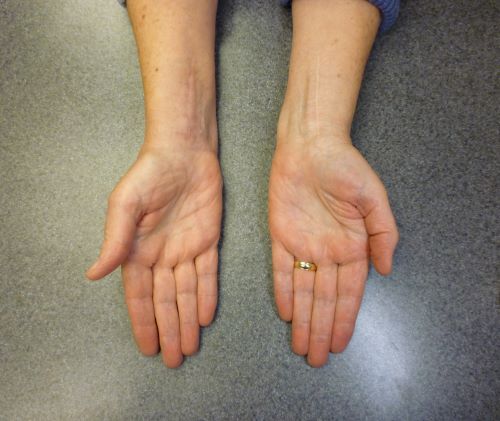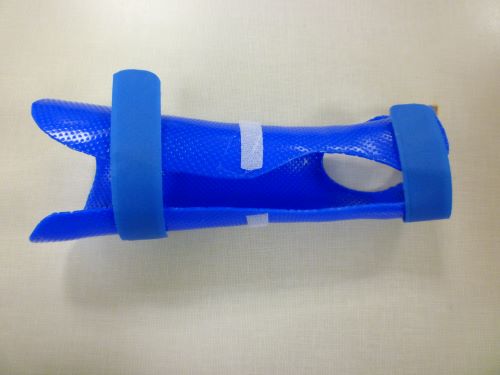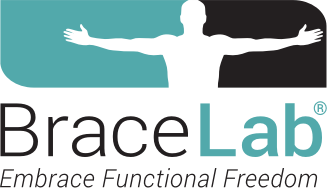Shifting Paradigms: Evolving Hand Therapy Approaches

January 2024 No. 82
Shifting Paradigms: Evolving Hand Therapy Approaches
by Karol S. Young, OTD, OTR/L, CHT
Have you had the rare experience of treating the same patient for the same diagnosis five years apart? If so, was your treatment the same?
I treated Mary Ann, 73, five years ago following ORIF of her left distal radius fracture and recently she underwent ORIF of her right distal radius fracture (Figure 1). As her recent treatment progressed, she commented that her therapy seemed different from that following her previous injury. I realized I changed my treatment approaches! Here are my fresh perspectives.


Figure 1: Mary Ann's Right and Left Wrists
Evaluation is More than Numbers
An evaluation quantifies range of motion, edema, strength, pain, and sensibility. While changes in these measurements are necessary to show progress for insurance reimbursement, the do not provide a comprehensive view of a patient's movement patterns.
These approaches below helped me "see" Mary Ann's limitations more clearly:
• Does Mary Ann have normal tenodesis and is she able to actively stabilize her wrist in extension when gripping?
- Wrist position during finger flexion determines whether Mary Ann can actively regain finger flexion. Isolated finger and wrist range of motion measurements cannot quantify the potential for regaining hand function.
• Can she fully close her fingers, and does she initiate finger flexion starting with the DIP joint?
• Are the lumbrical muscles tight?
• Are the interosseous muscles tight?
In addition to appreciating the limits caused by joint stiffness and swelling, knowing the extent of interosseous and lumbrical muscle tightness directs my clinical focus.
Focus on Function
Like many patients, Mary Ann wanted to show her injury x-rays and talk about her injury. However, from the beginning of her treatment, I shifted the focus towards healing and function rather than the injury.
Pain research indicates focusing on pain may have a detrimental effect on healing. Physiological changes in the brain after injury, as well as immobilization, contribute to the idea that movement will cause more pain, creating patient apprehension.
I substitute the term “pain” with “discomfort” or “tightness.” Instead of focusing on the level of discomfort or tightness, we focused on the function the discomfort prevented. For example, I asked Mary Ann, “Does your discomfort keep you from washing your face or sleeping?”
I now use my evaluation and treatment time to educate the patient on the importance of returning to normal hand function as well as the role our brain plays in our perception of pain.
Changing Up My Orthotic Approach
Thinking thicker thermoplastic material produces a more rigid and supportive orthosis and perhaps because the material is easy to handle and readily available in our clinic, I routinely use 1/8-inch (3.2mm) thick material to construct a volar wrist orthosis. After chatting with hand therapy peers, I began experimenting with thinner thermoplastic materials.
For Mary Ann, fabricating a circumferential wrist orthosis from 1/16-inch (1.6mm) thick perforated material provided better conformity while not sacrificing the required support. This design also provided less skin sheer and was easily adjusted when edema decreased. Most of all, Mary Ann preferred the thinner, lighter weight material; she found it more comfortable than her previous orthosis.
The adhesive-backed hook Velcro™ used to secure loop straps on an orthosis tends to snag clothing and gather fibers from fabric/ bedding. Using a smaller, thinner strip of hook Velcro™ on the orthosis, kept the straps secure which reduced snagging on Mary Ann's clothing and saved on the amount of hook Velcro™ needed (Figure 2).


Figure 2: Circumferential orthosis with thinner thermoplastic material and smaller VelcroTM hook pieces
Evolved Treatment Choices
I no longer see patients like Mary Ann two to three times weekly. Patients with uncomplicated healing I see once a week or every other week, and monitor their home exercise program. While there is controversy over the need for therapy after distal radius fractures, I believe weekly therapy visits track progress and can prevent problems before they arise.
To promote functional return as well as to fully engage the sensorimotor cortex after injury, I now include bilateral functional tasks as well as those that offer proprioceptive feedback. Mary Ann remarked that her current home exercise program was different from before because it included wringing a washcloth, opening jars, placing golf balls in a cup, and active wrist control in a variety of positions with progressive loading.
Mary Ann's complaints of skin hypersensitivity and sensory changes were addressed with taping, as was the localized swelling and tightness around her scar (Figure 3a).
Vibration stimulated her peripheral nervous system which also relieved her skin hypersensitivity and improved her sensibility (Figure 3b).




Figures 3a & 3b: Taping and vibration to decrease scarring and hypersensitivity
I have found addressing soft tissue concerns and sensory complaints early in treatment assists in decreasing pain.
Since treating Mary Ann 5 years ago I have a higher awareness of the possible comorbidities such as trigger finger or carpal tunnel syndrome. Any early symptoms of these conditions prompt me to immediately change my treatment.
Additionally, if joint stiffness and dysfunctional movement patterns do not resolve in the first few weeks of therapy, I do not hesitate to use the Casting Motion to Mobilize Stiffness (CMMS) technique to address these conditions before they progress.
Future Perspective
Treating Mary Ann’s distal radius fractures several years apart gave me insight into the evolution of my treatment approaches. With distal radius fractures being the most common upper extremity fracture, and the occurrence rate increasing worldwide, are we looking at our treatment through the same lens we used five years ago? What new perspectives you have developed when treating common conditions in your hand therapy practice?
Download Clinical Pearl No. 82, Shifting Paradigms: Evolving Hand Therapy Approaches, January 2024
© BraceLab; 2024 all rights reserved
Disclaimer: BraceLab Clinical Pearls are intended to be an informal sharing of practical clinical ideas; not formal evidence-based conclusions of fact.
